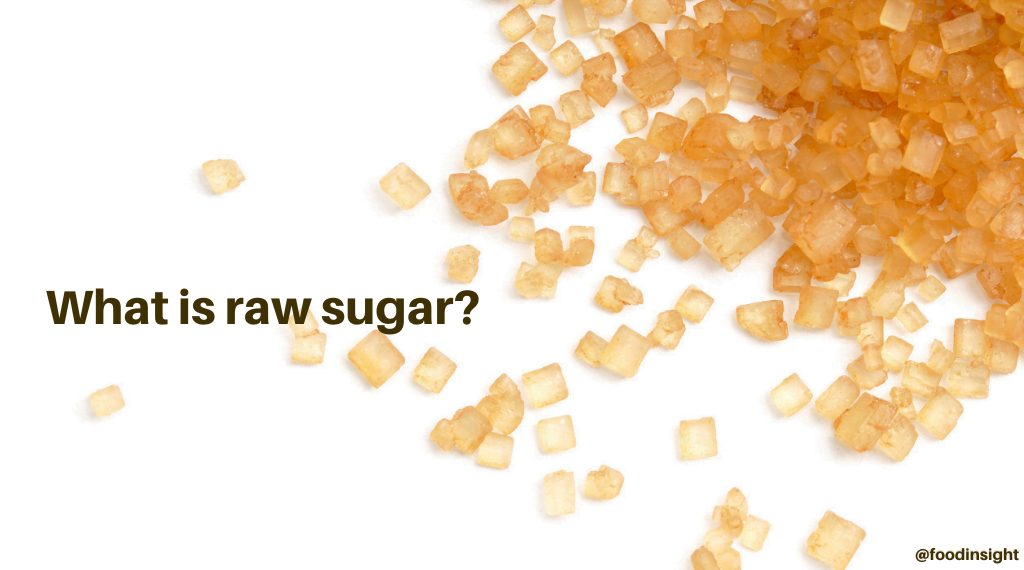There are many different types and forms of caloric sweeteners that we collectively call “sugar.” Some sugars come in granulated form, such as table sugar. Table sugar is sucrose, a disaccharide made of equal parts of two monosaccharides: glucose and fructose. Other sugars, such as high fructose corn syrup, come in liquid form as a mixture of the monosaccharides glucose and fructose.
Raw sugar, also known as turbinado sugar, is light brown in color and comes in crystalized form. It is primarily sucrose (96–99%) and a small amount of molasses. Raw sugar contains about the same number of calories per teaspoon as table sugar. Although it may impart a slightly different flavor than table sugar because it contains molasses, raw sugar can be used like table sugar for baking or sweetening coffee and tea.
Where does raw sugar come from?
Raw sugar is produced through the refinement of sugar cane. In the U.S., sugar cane is produced in three regions: southern Florida, the Mississippi Delta region of Louisiana and southern Texas. According to the U.S. Department of Agriculture, Florida is the top sugar-cane-producing state.
The number of steps involved in the sugar-cane-refining process can affect the color of a sugar’s end product. While table sugar is white, raw sugar is light brown because it is less refined and, as a result, contains more of the natural molasses present in sugar cane. Table sugar that is made from sugar cane undergoes additional refining to remove molasses.
Is raw sugar a natural or added sugar?
Sucrose can be considered a natural sugar or added sugar depending on its source. Sucrose is considered a natural sugar when we consume it directly from whole plant foods like fruits and vegetables. When sucrose is consumed in the form of raw sugar, however, it’s considered an added sugar because it provides additional calories to foods and beverages that didn’t already contain them.
Unfortunately, only about one in ten American adults eats the recommended amount of fruits and vegetables per day, while six in ten American adults eat more added sugars than is recommended.
How is raw sugar digested?
When raw sugar is consumed, it’s used for energy similar to the way other sugars are. Sucrose is first broken down into equal parts glucose and fructose. Glucose ultimately gets taken up by our cells with the help of insulin, while fructose is handled in the liver and does not need insulin to be absorbed. Although there is a very small amount of various nutrients in raw sugar that come from molasses, raw sugar is not considered healthier than other sugars.
To learn more about carbohydrates and sugars like sucrose, watch this video.
